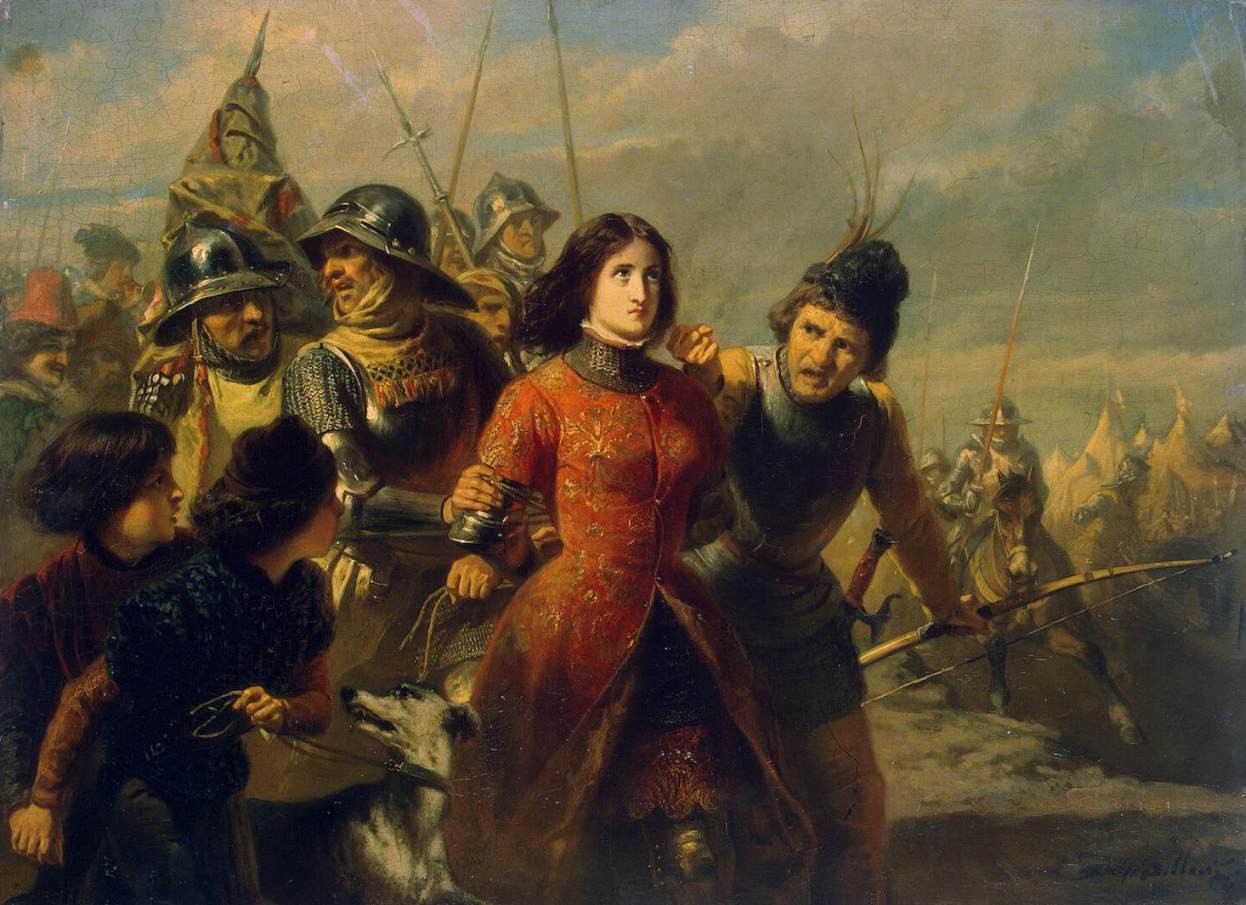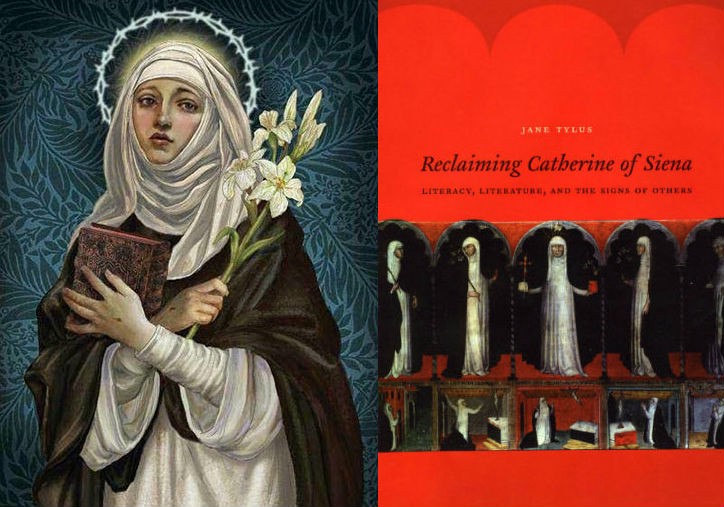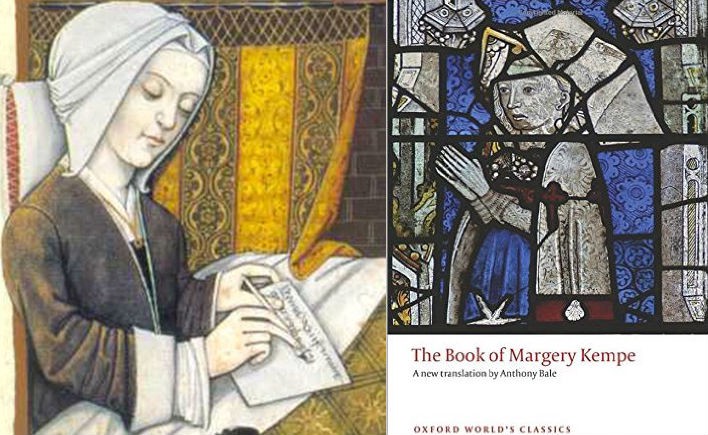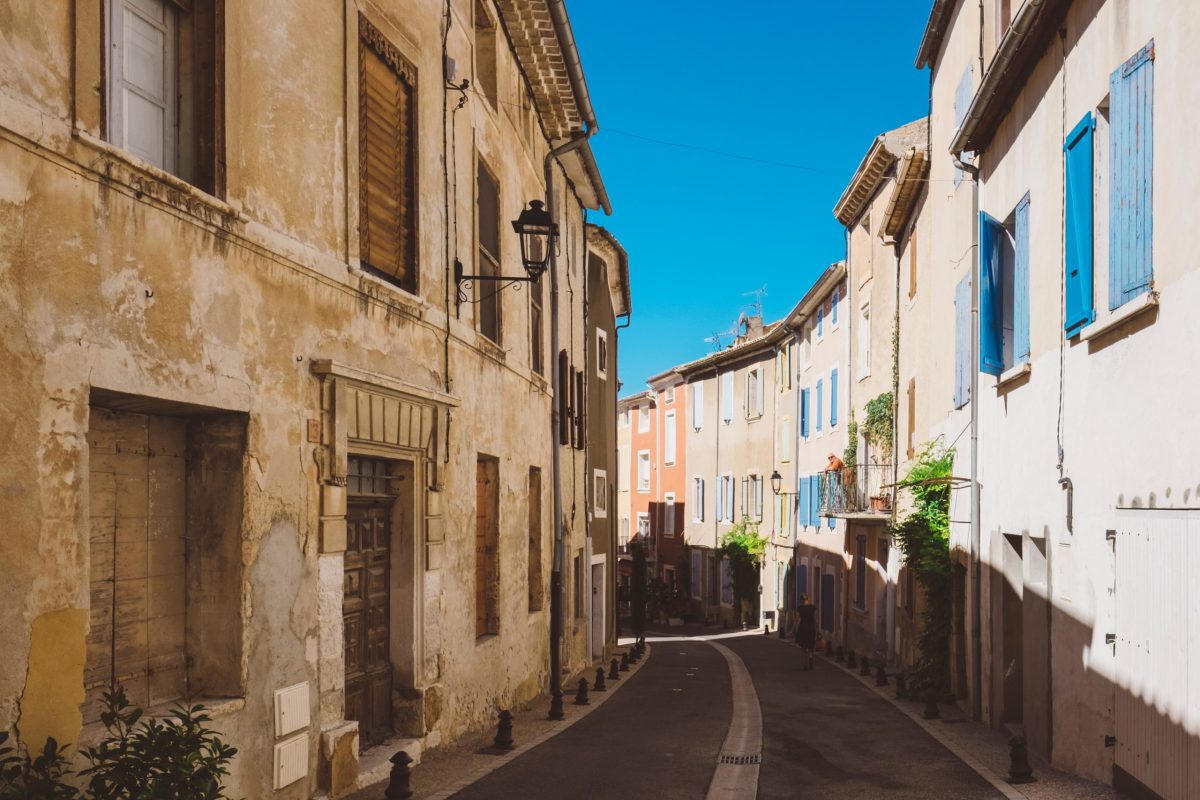Reading Lists
7 Women Saints Who Resisted
Jessie Chaffee on the lives of renaissance rebels

“We cannot live in a world that is not our own, in a world that is interpreted for us by others . . . Part of the terror is to take back our own listening, to use our own voice.”
The Catholic saint Hildegard of Bingen wrote this in the twelfth century, but she could have been speaking today. As a woman writer, I’m always aware that my voice is part of a larger battle, and that battle includes the choices I make on the page, the stories I choose to tell. Hildegard and other women like her were fighting to tell their own stories. And although they would later be sainted by the church, in their time, they were extremists, bucking the expectations of family, society, and the church itself, and declaring that their lives — and their legacies — mattered.
I spent the past several years with the Catholic mystical saints — their writing, histories, and, sometimes, their mummified body parts — while working on a novel about a young woman who is drawn to these Medieval and Renaissance rebels. The saints were celebrities — from Clare of Assisi in the twelfth century to Margery Kempe in the fifteenth — famous for their intense faith, their feverish ecstatic visions, and the miracles they performed. But most miraculous to me was their determination to control their lives. Almost all of them escaped a seemingly unavoidable fate: an arranged marriage, an abusive relationship, a life in poverty, or a spouseless existence that would have left them vulnerable — economically and physically. Their faith was a kind of trapdoor to a new reality, one they clung to fiercely.
And they didn’t just live this reality. Many left, in their own words or in testimony, an account of their lives — “I, Catherine,” “I, Clare,” “I, Angela,” they wrote, at a time when such an “I” was itself an act of rebellion. They were not only making themselves heard loudly, but they had the gall to assume a legacy. A radical assumption. And whenever I think we’ve come far from the experiences of these women — many of whom were accused of being mad, possessed, vain, heretical — I remember the criticisms that often still fall heavy on women’s writing: it is too navel-gazing, overly confessional, meant only for a certain kind of reader and certainly not for all readers.
Hildegard knew that if you don’t write your story yourself, it gets written for you. For women, writing about their interior lives, their bodies, and the world as they see and experience it remains a radical act, and one that the saints were participating in hundreds of years ago when they rejected society’s designs to keep them contained and silenced. They said no to the world that was offered to them, and, instead, they reimagined their own.
Below are seven of my favorite rebel saints who #resisted, along with suggested reading about their lives — Jessie Chaffee
1. “When we are who we are called to be, we will set the world ablaze.” — Catherine of Siena (1347–1380)
St. Catherine is one of the most well known saints, and for good reason. Her battle to enter the church was hard fought. Her parents expected her to marry well. Instead, Catherine shaved her head, slept on a board, prayed incessantly, wore a chain with small hooks around her waist that would draw blood each time she moved, and eventually grew so ill that her family relented. After joining the church, Catherine became educated and had visions — in one, she experienced a mystical marriage to Jesus (complete with Christ’s foreskin as her wedding ring). Her visions afforded her tremendous power, which she used politically, even traveling to France to convince the Pope to return to Rome. She remained a presence long after her death, leaving behind an extensive autobiography in the form of letters and spiritual writings. Her full, mummified head was also preserved, along with her finger — you can visit them in the Basilica of San Domenico in her hometown of Siena.
— Suggested reading: Jane Tylus’s Reclaiming St. Catherine, an exploration of Catherine’s work and her impact on the Italian literary canon.

2. “I am not afraid. I was born to do this.” — Joan of Arc (1412–1431)
Believing that God had chosen her to lead France to victory in its war against England, Joan of Arc, a young woman born a peasant, won over the prince (soon-to-be King Charles VII) with her intelligence, faith, and sheer will, convincing him to allow her to lead the French army to free the city of Orléans. Though victorious, Joan was ultimately captured by English forces and tried for witchcraft and heresy (along with a slew of other charges, including dressing like a man). Though she had secured King Charles’s crown with her victories, he failed to intercede on her behalf, and after a year’s imprisonment, she was burned at the stake at age nineteen. Canonized in 1920, she became the patron saint of France.
— Suggested reading: Lidia Yuknavitch’s post-apocalyptic reimagining of the saint’s life, The Book of Joan; and Kathryn Harrison’s psychological biography Joan of Arc: A Life Transfigured.

3. “She was filled with inestimable satiety, which, although it satiated, generated at the same time inestimable hunger.” — Angela of Foligno (1248–1309)
Angela’s accounts of her ecstasies explore in detail the relationship between desire and pain. Like Teresa of Ávila, her writing was orgasmic — she describes: “The fire and fervor of such divine love in such a degree that I did cry aloud.” When priests, threatened by the extremity of her visions, tried to undermine their authenticity, St. Angela fired back at them: “Priests cannot preach it. They do not understand what they preach. They babble.” Like many of the saints, though she was bound by the church, she did not hesitate to challenge the institution, and her claims of a direct correspondence with God gave her the leverage to do so.
— Suggested reading: Angela of Foligno: Complete Works, translated by Paul Lachance.

4. “Dare to declare who you are. It is not far from the shores of silence to the boundaries of speech.” — Hildegard of Bingen (1098–1179)
Hildegard felt compelled by God not only to write but to publish works based on her visions. She produced multiple books, hundreds of letters, morality plays, and homilies, as well as hymns, canticles, and anthems, for which she composed the music and lyrics, and scientific and medical works that included the causes of and holistic treatments for diseases, and reflections on human sexuality and psychology. She used her words to understand the world and to create her world. As she declared: “We cannot live in a world that is not our own.” While writing by many of the saints has been forgotten beyond the church or academia, Hildegard’s music has had a resurgence in recent decades, and is now recorded and performed all over the world.
— Suggested reading: Mary Sharratt’s retelling of Hildegard’s life, Illuminations: A Novel of Hildegard von Bingen.

5. “There is no one who could separate me from such great joy.” — Clare of Assisi (1194–1253)
Clare was a follower of St. Francis and, in the tradition of the Franciscans (and our current Pope), eschewed material wealth. She founded her own order, later called the Poor Clares, and she was savvy about maintaining control of that order — she refused gifts from the Vatican, avoiding the attached strings, and cleverly prevented the papacy from becoming proprietors of the land on which her monastery sat, using as her defense the Franciscan philosophy that didn’t allow for personal ownership. Clare’s actions inspired a powerful grassroots movement and similar orders began popping up throughout Italy and beyond. They became magnets for women young and old in the centuries after Clare’s death, peaking in the mid-1600s.
— Suggested reading: For Italian readers, Dacia Maraini’s fictional retelling of Clare’s life, Chiara Di Assisi. Elogio della disobbeienza (Clare of Assisi: In Praise of Disobedience).

6. “But for I am a woman should I therefore live that I should not tell you the goodness of God?” — Julian of Norwich (1342–1416)
Julian of Norwich’s early life is a mystery — we are not even sure of her real name. (Julian is taken from the church where she was anchoress for many years.) But as the woman who penned what is considered to be the first English-language book authored by a woman, Revelations of Divine Love, she left an indelible mark and created room for writers after her. And though, like many writers, Julian was reclusive, she still encouraged people to come to her for advice, and counseled locals navigating plague and poverty. She was also a mentor to another writer and visionary, Margery Kempe. The manuscripts of teacher and student were displayed together for the first time last year at the British Library.
— Suggested reading: Barry Windeatt’s recent translation of Revelations of Divine Love by Julian of Norwich.
7. “The archbishop said to me, ‘I hear that you’re a thoroughly wicked woman.’ I replied, ‘And I hear you’re a wicked man, sir.’” — Margery Kempe (1373–1438)
Margery was married and after the birth of her first of fourteen children, began having visions that lasted the rest of her life. At age forty, she was inspired her to go on a pilgrimage — it became the first of many and she spent much of the next decades traveling. The Book of Margery Kempe, written through dictation, describes her mystical and religious experiences, her many journeys, and her interrogation and occasional arrests by men both religious and secular who accused her of lying about her beliefs. Nevertheless, she persisted, producing her eponymous work, considered by some to be the first English-language autobiography.
— Suggested reading: Anthony Bale’s recent translation of The Book of Margery Kempe.










